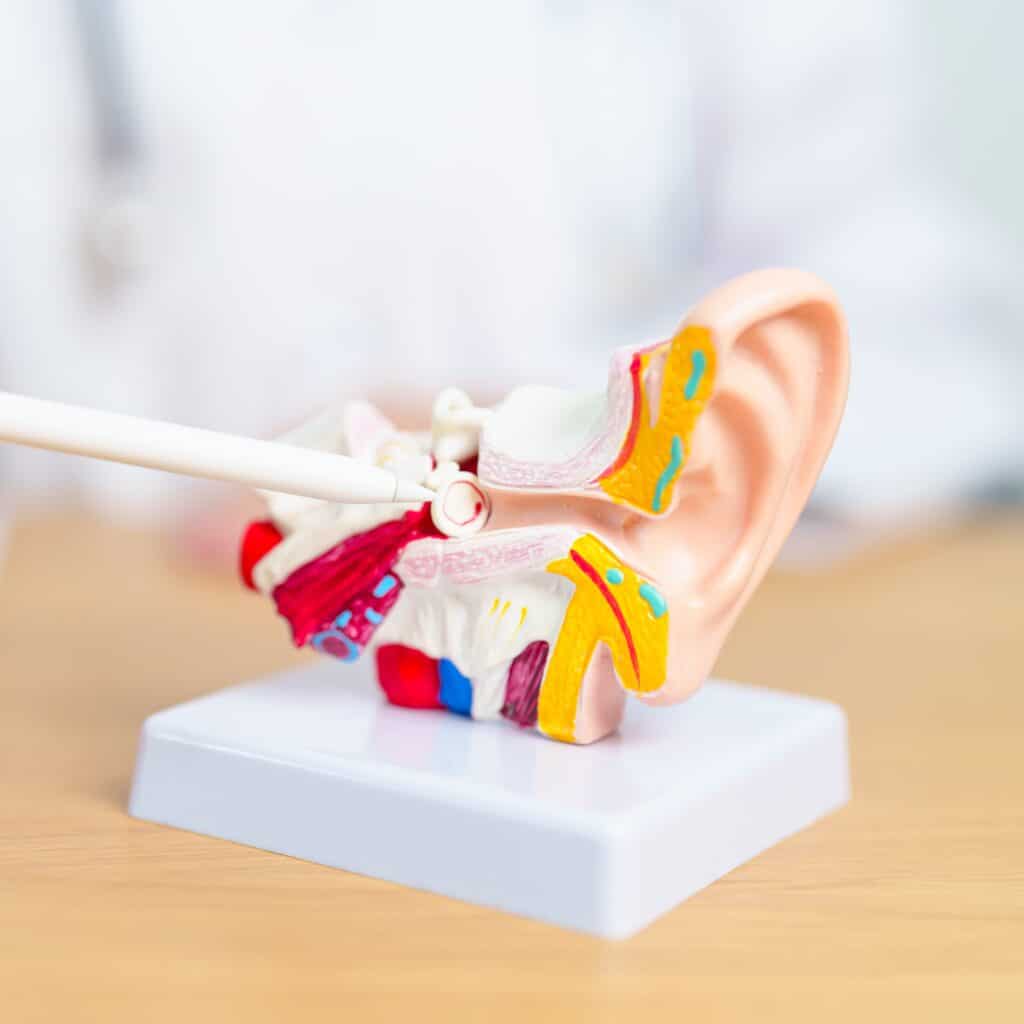The external ear canal is a critical component of our auditory system, playing a pivotal role in the way we hear and maintain ear health. Understanding its structure and function is essential, especially when discussing professional ear cleaning techniques like microsuction.
This blog post explores the anatomy of the external ear canal, its significance in the ear cleaning process, and the limits of where microsuction is applied.
Anatomy of the External Ear Canal
The external ear canal, also known as the outer ear canal, forms part of the outer ear and is one of the external ear components essential for hearing. It starts from the pinna, which is the visible part of the ear that helps in capturing sound waves, and extends to the eardrum (tympanic membrane).
The canal itself is approximately 2.5 centimetres long and is S-shaped, which helps protect the deeper parts of the ear from foreign objects and bacteria.
The canal’s lining consists of skin, hairs, and glands that produce ear wax (cerumen). This natural secretion helps to trap dust and debris, providing a self-cleaning mechanism that protects the middle and inner ear from potential harm.
Functions of the External Ear Canal
The primary function of the external ear canal is to transmit sound from the outside world to the eardrum. The canal’s shape enhances sound waves before they reach the eardrum, amplifying them and allowing us to hear more clearly. Additionally, the ear wax produced within the canal acts as a protective barrier, preventing infection and maintaining the health of the ear.
Microsuction and the External Ear Canal
Microsuction is a procedure focused on the external ear canal for removing excess ear wax and debris. This method is highly effective and safe, as it allows for direct visualisation of the ear canal, ensuring precision based wax removal, under the guidance of converged binocular lenses or loupes.
During microsuction, a small, gentle vacuum device is used to suck out the unwanted material from the ear canal. The procedure is precise, targeting only the areas that need cleaning, and does not extend beyond the external ear canal to areas like the middle ear.
Limitations of Microsuction in the Ear
It’s important to note that microsuction strictly focuses on the external ear canal and does not extend into the middle or inner ear. The middle ear, located behind the eardrum, contains the ossicles (tiny bones that transmit sound vibrations) and is connected to the throat via the Eustachian tube, which helps maintain pressure balance. The inner ear includes the cochlea and the vestibular system, which are crucial for hearing and balance.
Attempting to clean or manipulate the middle and inner ear without professional oversight can lead to serious complications, including infection, hearing loss, and damage to the delicate structures within these parts of the ear.
Why Focus on the External Ear Canal?
The design of the external ear canal makes it particularly susceptible to wax build-up and blockages, which can lead to discomfort, infection, and hearing loss if not properly managed. By focusing on this area, microsuction provides a targeted approach that alleviates these issues without risking the health of the more sensitive components of the ear.
Conclusion
Understanding the structure and function of the external ear canal is crucial for appreciating why microsuction focuses on this specific area. This safe and efficient procedure ensures that the ear is cleaned effectively and preventing complications without interfering with the more sensitive parts of the ear.
For anyone experiencing issues with ear wax build-up or blockages, Earworx’s professional microsuction offers a reliable solution that prioritises both efficacy and safety.
Book an Appointment
If you’re experiencing discomfort from ear wax build-up, or simply want to maintain optimal ear health, consider professional ear cleaning as a safe and effective solution.
Find your nearest clinic and book an appointment today.



